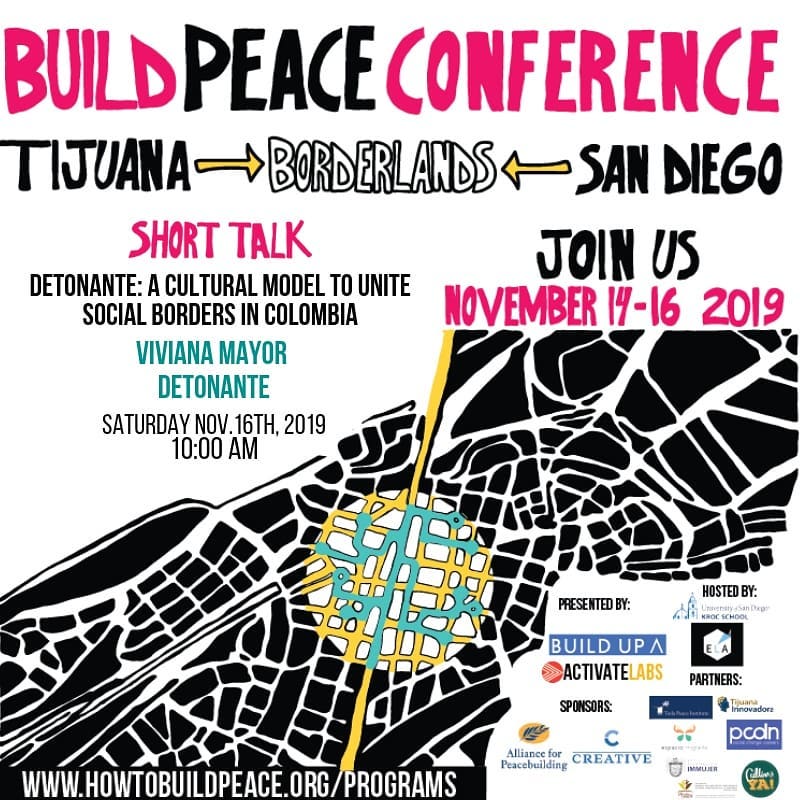How BuildUp is empowering local people to maintain peace in their communities
By Nia Harris

Problems with Peacebuilding
While peacebuilding has been a topic of conversation in global politics for decades, there are still conflicts that experts struggle to resolve. As the world changes and our societies change along with it, peace building must grow and evolve as well. External peacebuilding tends to focus on a small group of locals, leaving a large number of important groups out of the conversation. Many peacebuilding organizations have struggled to find sources of long-term funding, making it difficult to continue projects for as long as necessary.
BuildUp’s Approach
BuildUp seeks to change the peacebuilding landscape by making it more inclusive and hopefully creating more sustainable peace. The strategy is to equip local people to use technology strategically to reach more and different people in order to help them sustain peace in their communities. By combining technology and research, they use new and emerging technologies to address conflict in the digital age. Additionally, they also host the annual Build Peace conference, which is the largest conference on peace building, technology and the creative arts.
BuildUp’s Strategies
A More Inclusive Peace Process: Despite best efforts, peacebuilding has often left many people out of the conversation. Whether it’s women or ethnic and religious minorities these exclusions are conducive to sustainable peace. BuildUp seeks to include all members of the local community to ensure that all voices are heard.
Working with local peacebuilders: By supporting local peacebuilders, BuildUp works to ensure that the local community is driving a majority of the work and that BuildUp is simply there to provide technical support.
Challenges Faced
Funding: As is the case for many NGOs, finding steady and reliable sources of funding can be difficult. Many donors are willing to provide funding to get projects off the ground but are often less willing to fund projects long term. This makes multi-year funding for projects incredibly difficult to find.
Measuring Results: Like many other facets of peacebuilding and humanitarian work, results can be difficult to measure. There are no clear widely used metrics off of which one can measure success, which can make it difficult for donors to stay engaged and willing to continue funding the project.
The infatuation with AI: Artificial Intelligence (AI) is an exciting new idea, and many are interested in seeing where it can be applied. However, it is not entirely clear to those who work in peacebuilding how AI could be applied to the peacebuilding space. Many want to introduce sophisticated technology into the peacebuilding space, but this does not guarantee that it will have the desired impact. Some argue that there canbe no substitute for human interaction in this particular environment.
BuildUp’s Best Practices
Being clear with funders: In an effort to secure long-term funders, being open and honest with potential donors about what the organization needs has proved helpful. Talking with funders about the organizations’ goals and seeking out funders that are willing to invest for several years ensures more secure funding sources.
Inclusivity: Holding tight to the principles of participation has been key to BuildUp’s success. At times, this can require that you relinquish some of your agency and turn it over to the local people. However, this can have promising results. Being more adaptable and flexible can help tremendously with this process. Though real inclusion is something that some organizations are starting to focus on, there is still a lot of room for improvement.
Vision for the Future
BuildUp hopes to stress the importance of true inclusivity in the peacebuilding space and reshape who we view as “peace builders” in vulnerable communities. In addition, they hope to bring their knowledge and skills back to their home countries in the West. Many post-industrialized nations, like the United States and Spain, are experiencing severe polarization in their politics. Consequently, tensions have flared, and many worry about the alarming state of politics in these countries.
In November 2019, BuildUp hosted their annual Build Peace Conference in San Diego, USA and Tijuana, Mexico. The goal of this conference was to analyze the borders, whether physical, social or digital, at the center of dynamics of oppression and can be root causes of violence, and how they can be used as a center of connection between divided communities.






Awesome post! Keep up the great work! 🙂